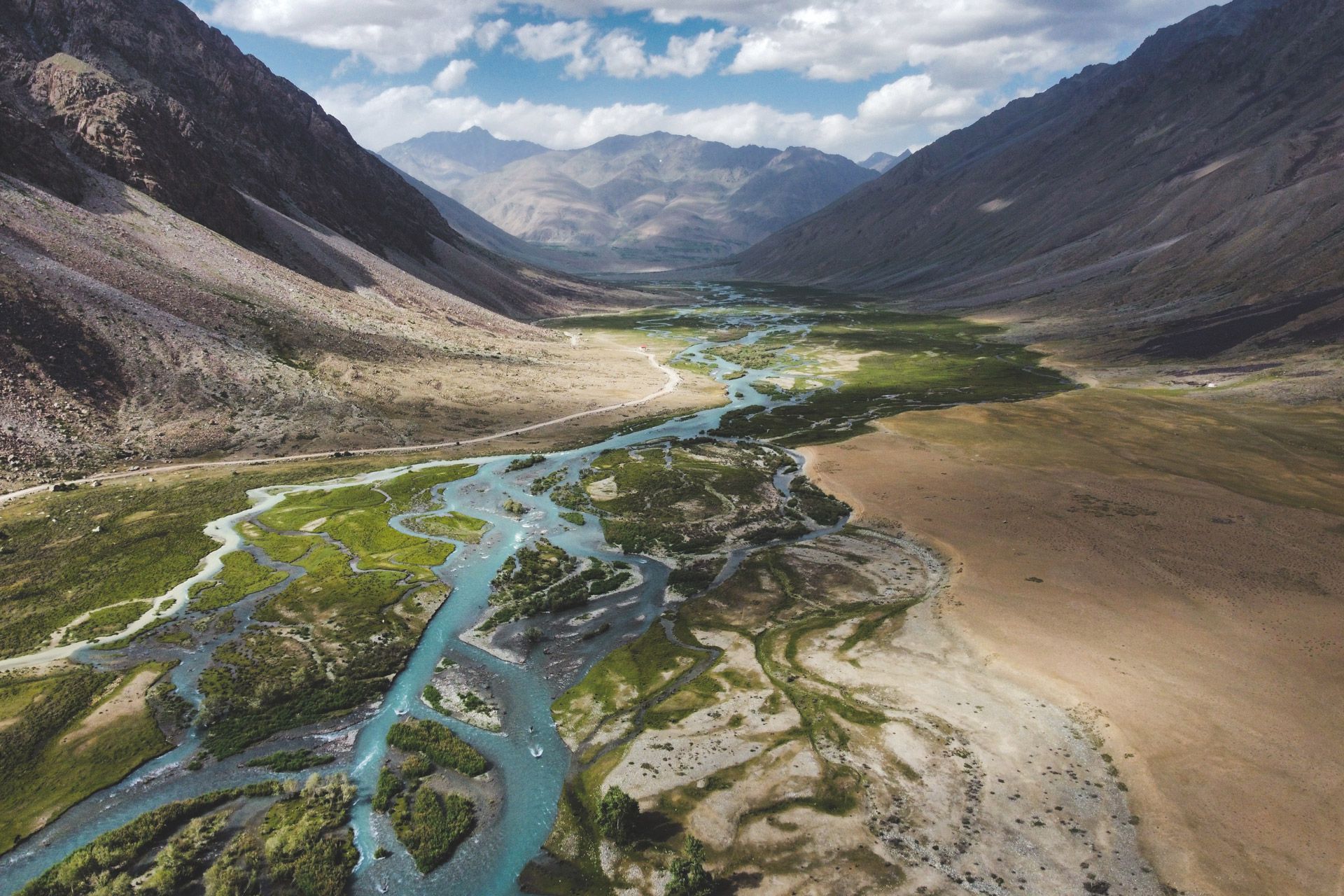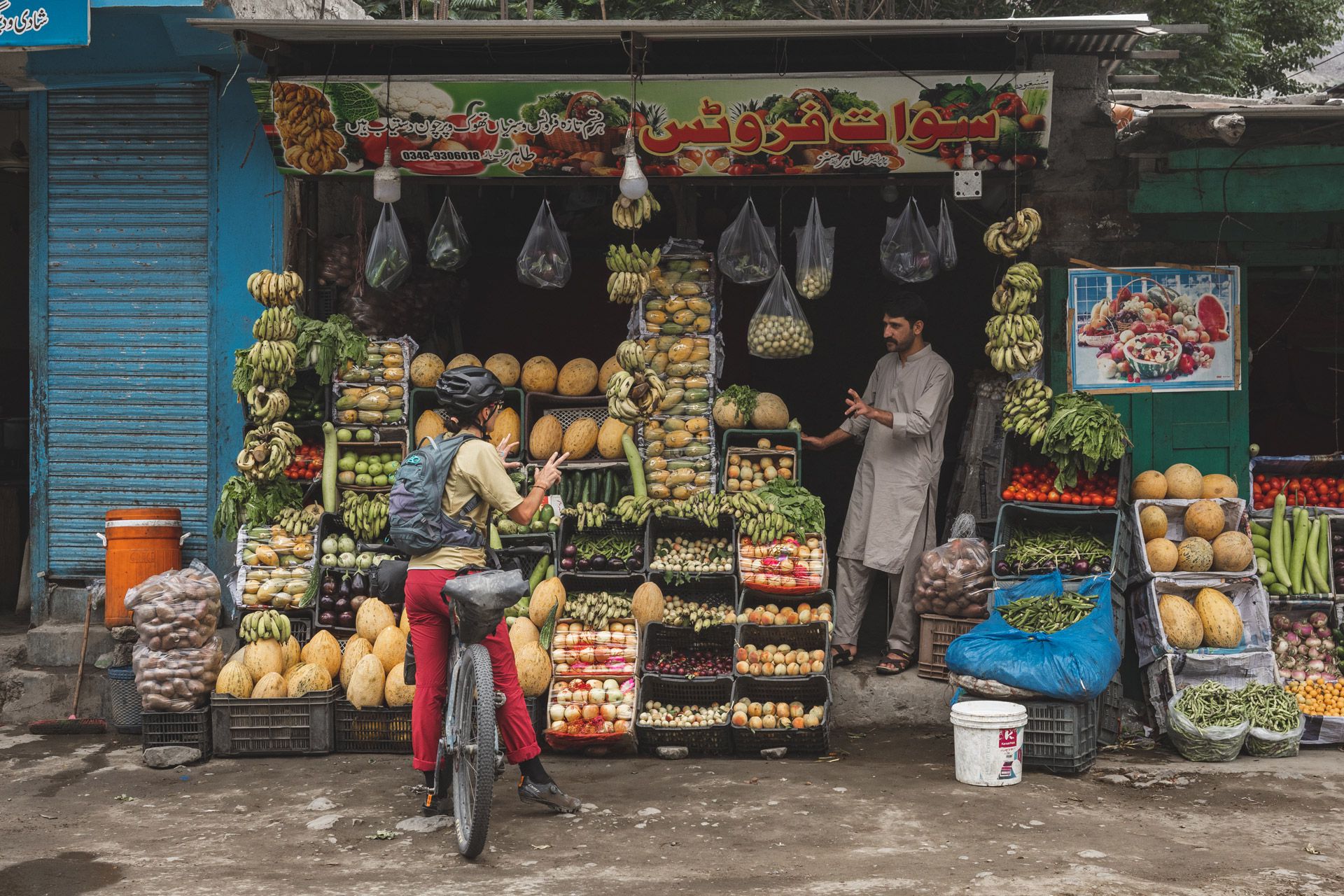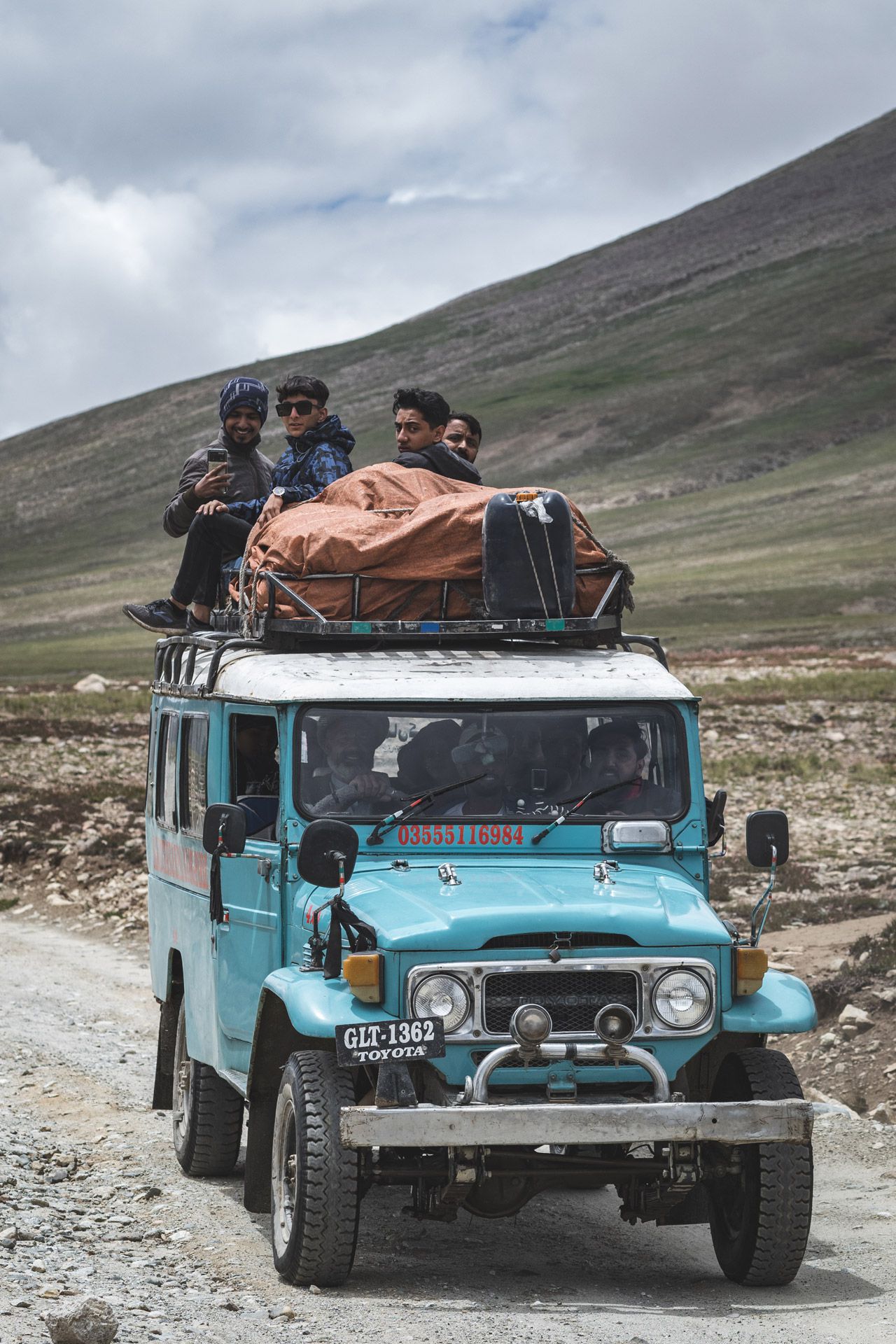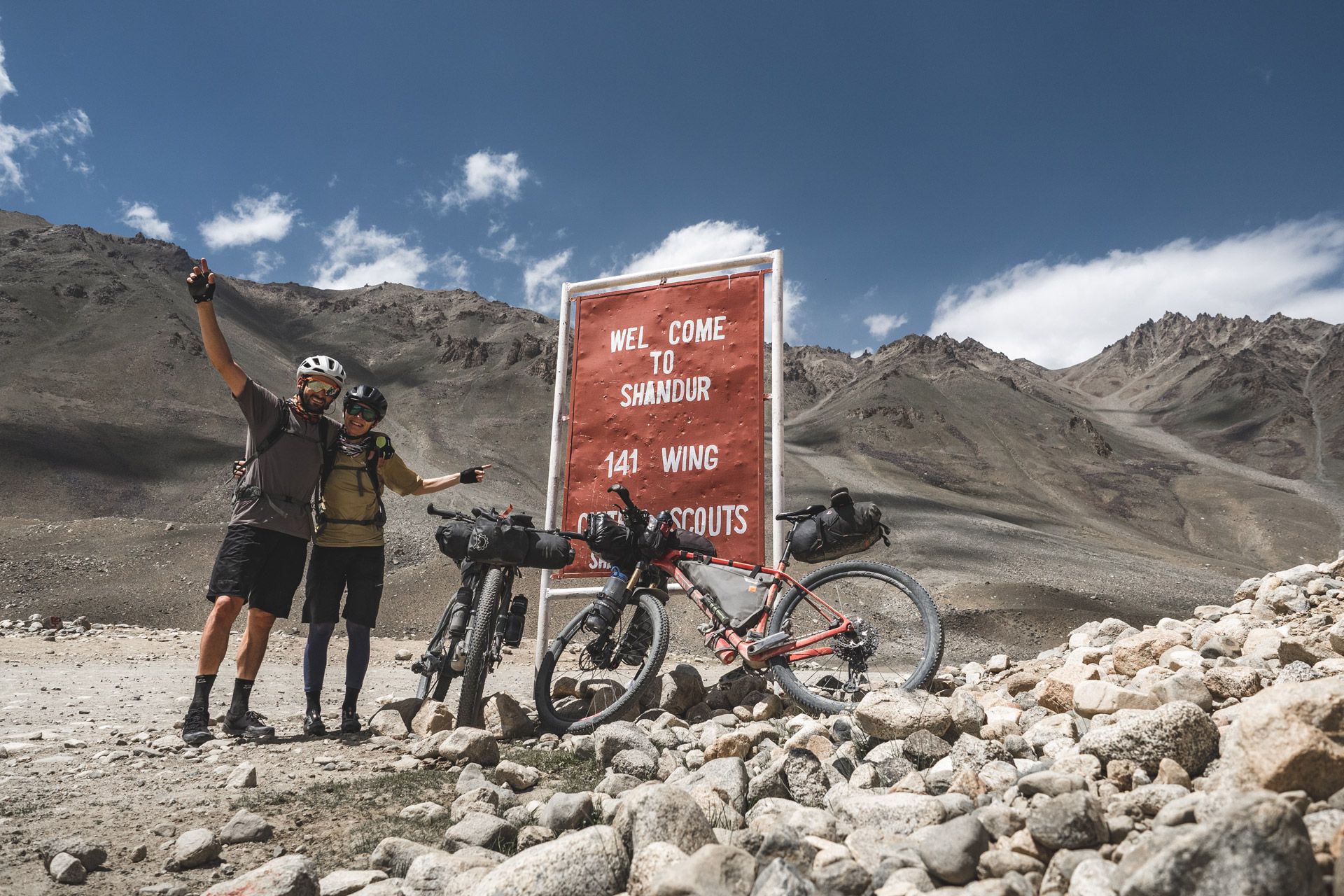We must confess that cycling in Pakistan had been an idea (almost a dream) for a long time. We knew that it would not be one of the “easy” countries and that plans would have to be adapted, changed or even forgotten. The first few days already showed us what it meant to move the pedals on Pakistani territory, through this dream country.
The journey from the Chitral Valley to Gilgit via the Shandur Pass at an altitude of 3,738 metres, is a thrill in every sense of the word. We are struck by the state of the tracks, more than once cut off by floods or landslides, the immensity of the mountains, the large number of police checkpoints, but above all by the warmth of the meetings with the people of these valleys.
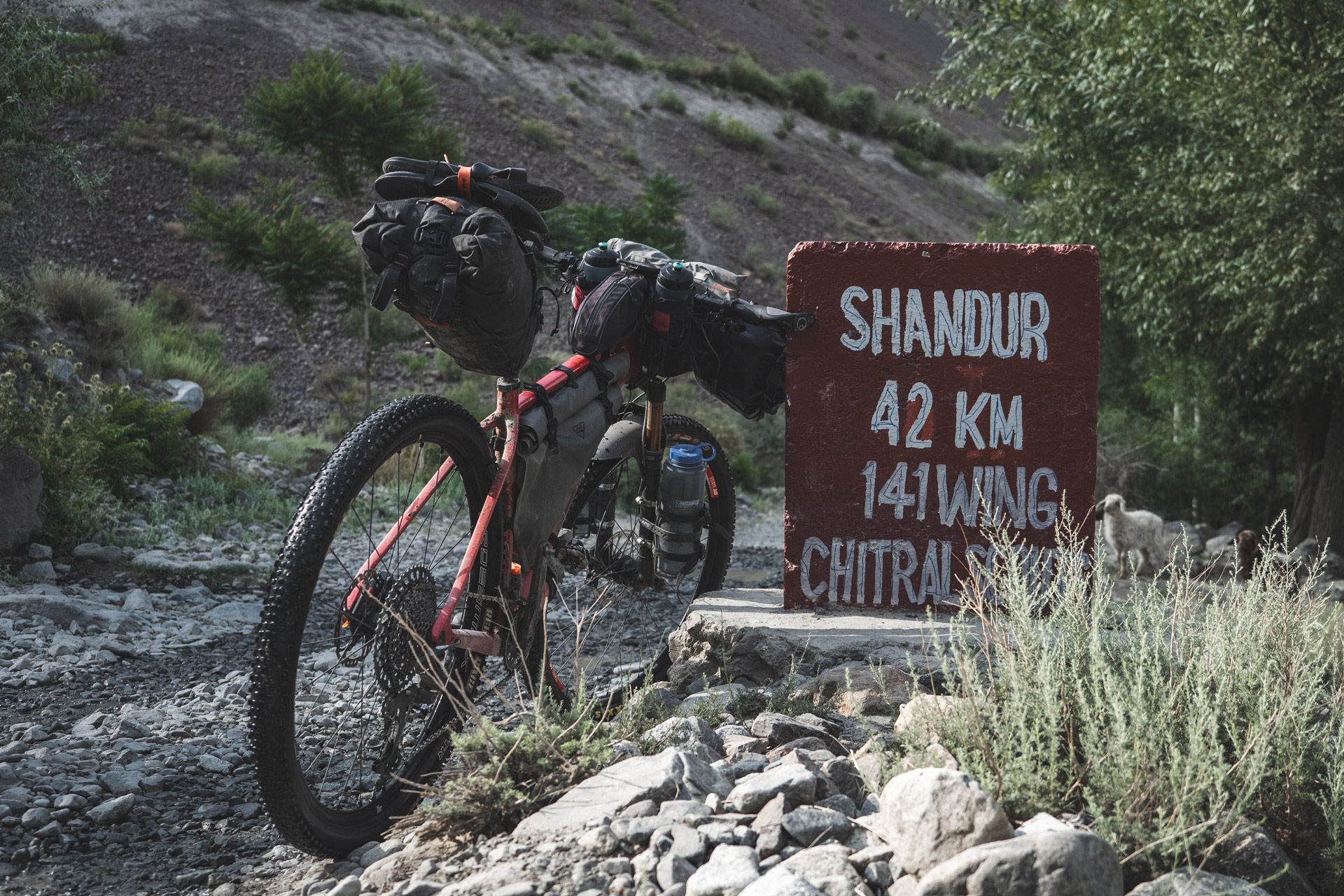
WE HAD TO CHANGE THE PLANNED ROUTE ALREADY IN THE FIRST FEW KILOMETRES.
A flood a few days ago washed away the road and a bridge. Even so, Pakistan is the land of a thousand solutions, and a small path leads uphill to the next village.
The police give us permission to pass. Problem solved, for us. For the locals, it is a big obstacle as the transport of goods has stopped and some food and produce is becoming scarce on the other side of the valley.
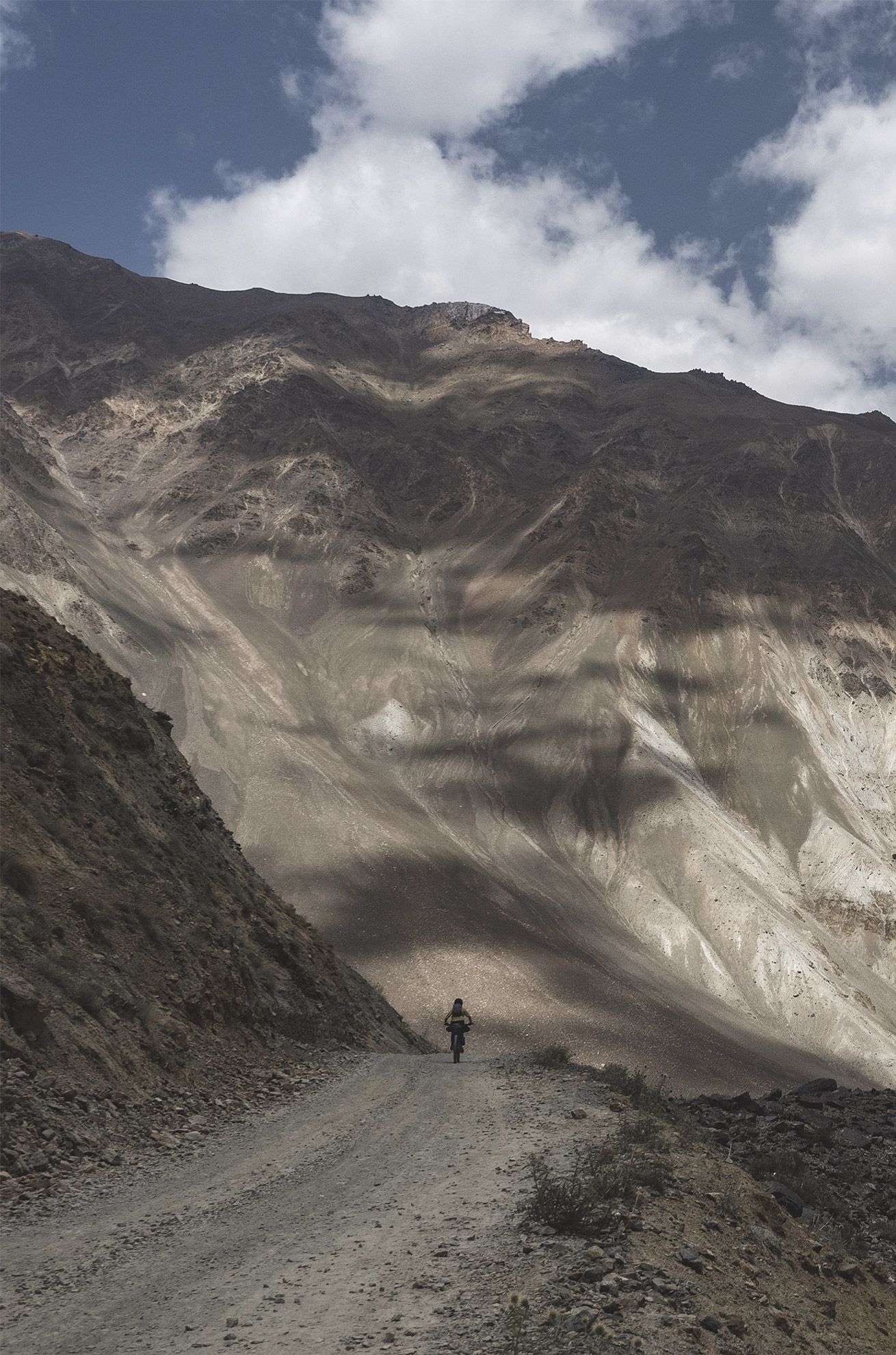
Once in Gilgit, we follow the legendary Karakoram Highway, the KKH. Our objective is not the KKH itself, despite its beauty, what we really want to do is to cycle into the Shimshal Valley and the Chapursan Valley.
The first of these is a real challenge for us. It is very hot, and often these high temperatures leave us out of the game at the end of the day. Moreover, it is a track where stones and rocks literally fall from all sides. Don't get distracted and watch out when you hear a rock fall to see where it will land.
At the bottom of the valley is the little village of Shimshal, tucked away in a remote and hidden location, where they live off crops and herds. Green Shimshal contrasts with the aridity of the valley.
THE CHAPURSAN VALLEY, ON THE OTHER HAND, IS MORE ACCESSIBLE. A TRACK FOLLOWS THE RIVER UP TO THE LAST VILLAGE, ZOODKHUN.
From there, we only have the permission to go as far as the temple of Baba Ghundi, where, fortunately, the annual festival takes place. The Afghan border is very close and for security reasons, we cannot cycle any further.
WE ARE ABOUT HALFWAY THROUGH OUR JOURNEY AND ARE NOW HEADING TOWARDS SKARDU.
This is the last town before climbing the Deosai National Park, the second-highest plateau in the world after Tibet. We have to climb some 2000 metres to reach the pass which is over 4000 metres above sea level and to enjoy the fresh air and the wonderful alpine scenery.
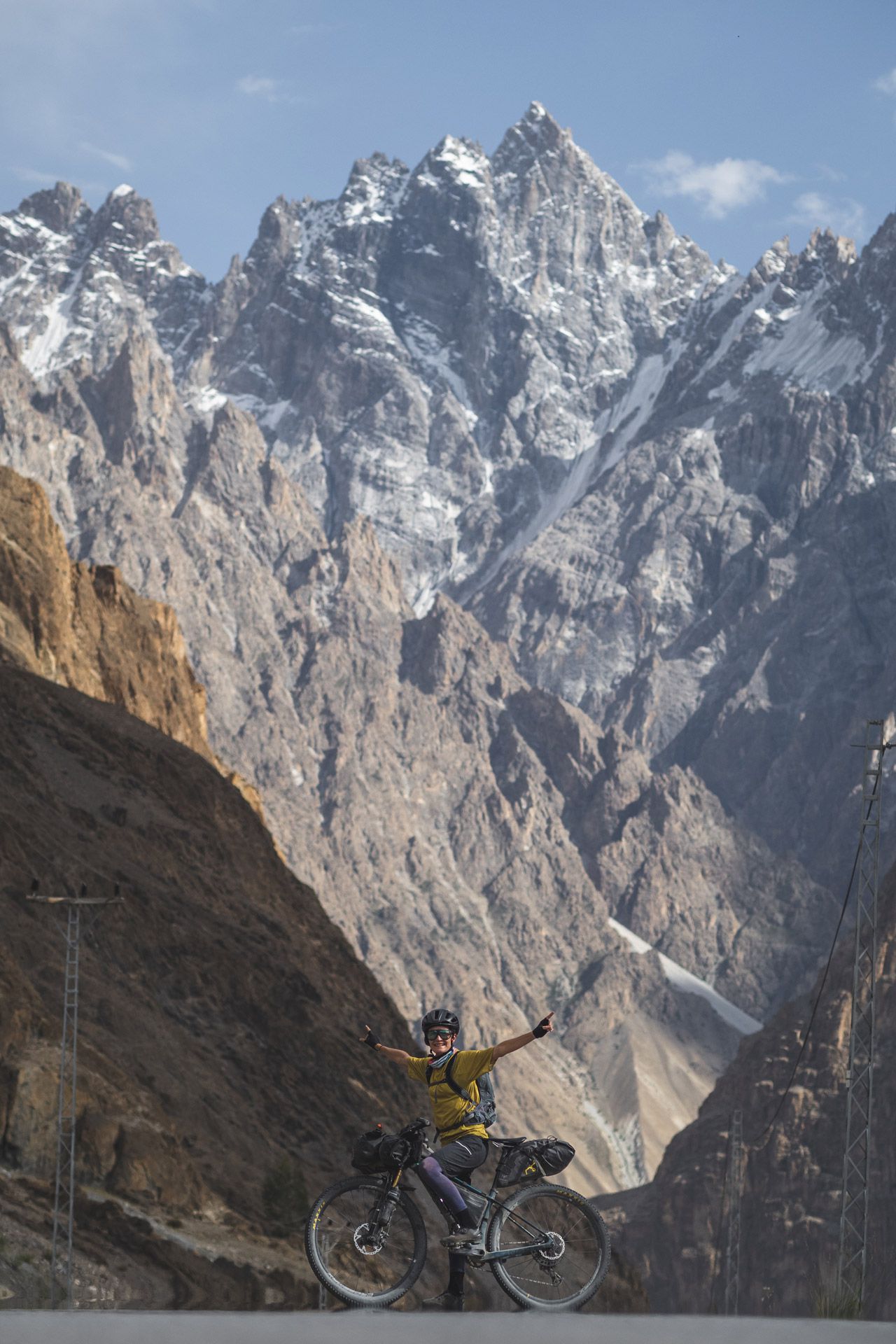
We share a night with national tourists from the south of the country, they are noisy and want to party. This is in stark contrast to the shepherds who live just a few metres away from these camps, without electricity, in small huts.
We are invited to enter one of them, and the harshness of their lives becomes clear at that moment.




